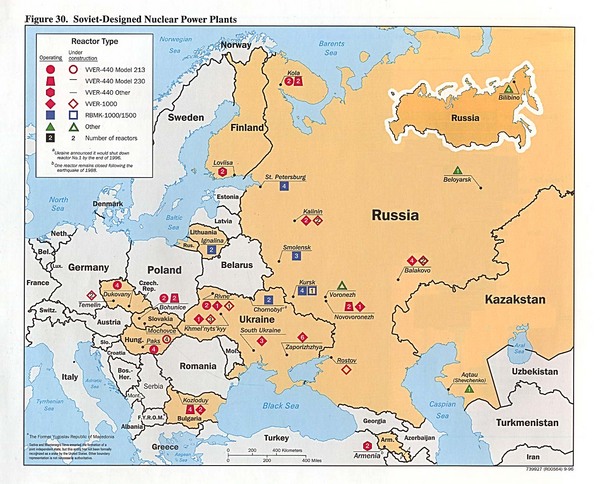Soviet Nuclear Reactors in Eastern Europe

Annotation
On April 26, 1986, an explosion at the Chernobyl Nuclear Power Plant in Ukraine led to the radioactive contamination of the surrounding countryside and to radioactive fallout throughout Eastern and Western Europe. The radiation released from the explosion was 100 times that of atomic bomb dropped on Hiroshima or Nagasaki. 30 to 35 million acres of land were irradiated; this land was home to more than 7 million people in 1986. The international reaction to the disaster included the emergence of a new environmental movement, especially focused on preventing future explosions if not limiting the use of nuclear power outright. As seen in this map created by the Central Intelligence Agency, a number of Soviet-designed nuclear reactors are still in operation throughout the former Soviet Union and in Eastern Europe. The emerging environmental movement in the late 1980s was not just a reaction to Chernobyl, but also from fears of these other nuclear reactors becoming a new Chernobyl. There was no part of Communist Eastern Europe unaffected by this disaster.